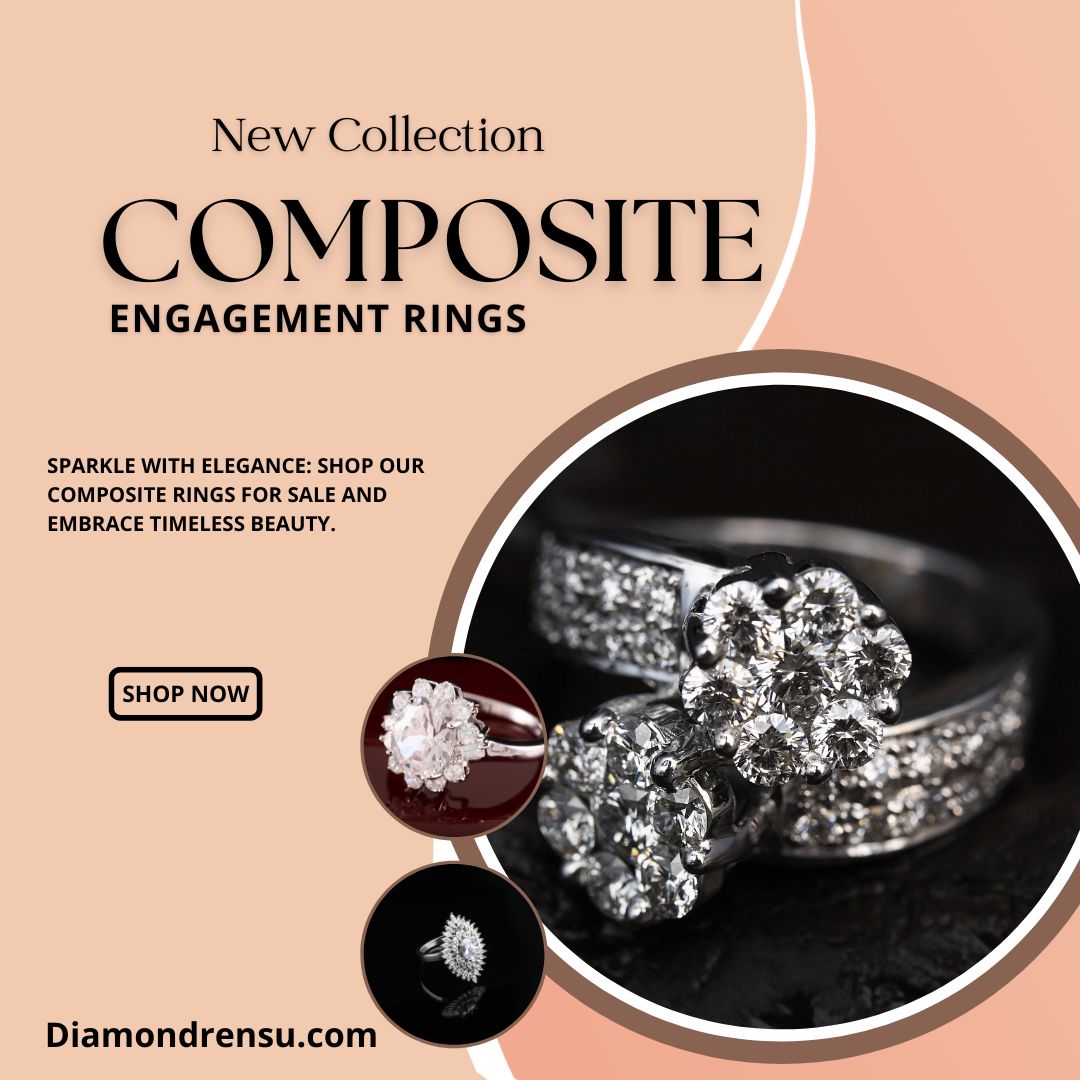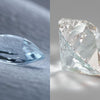
What is a Composite Diamond: Understanding Synthetic Gemstones
A composite diamond is a material combining diamond crystals with other materials to enhance certain properties while maintaining the exceptional hardness and thermal conductivity of diamond. Unlike pure diamond, which is a single crystal, composite diamonds are made using a process that embeds diamond particles into a matrix of another material such as metal or ceramic. The matrix material supports the diamond grains and can contribute additional characteristics, such as improved toughness or wear resistance.
Table Of Contents
In the creation of composite diamond materials, the focus is on achieving a fine balance between the inherent strengths of diamond and the desired features brought forth by the secondary component. Various manufacturing techniques, including sintering and high-pressure, high-temperature methods, are utilized to produce composite diamonds. These composite materials are engineered for a wide range of applications, from cutting tools that leverage the hardness of diamond to thermal management solutions that take advantage of diamond’s superior thermal conductivity.
Understanding Composite Diamonds
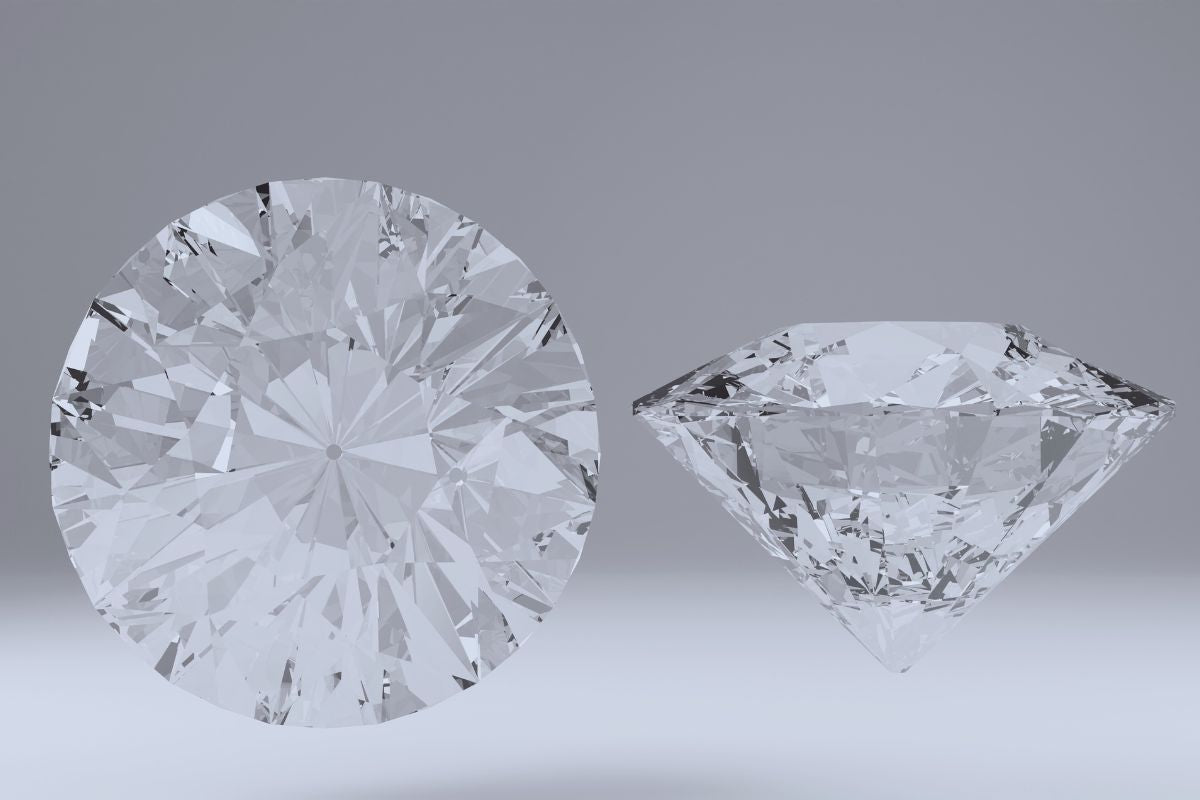
In the realm of gemstones, composite diamonds represent a category distinguished by their specialized construction techniques and materials that combine natural diamond pieces with simulants or lab-grown counterparts for increased affordability and size.
Composition and Creation
Composite diamonds are meticulously crafted by combining smaller natural diamond pieces with high-quality simulants or lab-grown diamonds. The process often involves techniques such as glass filling, which enhances the visual appearance by reducing the visibility of fractures. Unlike natural diamonds, which are formed over billions of years deep under the Earth's surface, composite diamonds are carefully engineered in a laboratory setting. Their creation involves a blend of advanced technological processes and artisanal craftsmanship to produce a stone that simulates the appearance of a larger, single diamond.
| Aspect | Description |
|---|---|
| Definition | Diamonds created or modified through various processes to enhance their appearance or characteristics. |
| Enhanced Diamonds | Natural diamonds treated to improve color or clarity, enhancing their visual appeal. |
| HPHT Diamonds | High-Pressure High-Temperature treated diamonds that undergo controlled conditions to alter color and inclusions. |
| CVD Diamonds | Chemical Vapor Deposition synthetic diamonds grown in a laboratory setting with controlled parameters. |
| Composite Diamond Coatings | Thin diamond layer applied to non-diamond material, providing improved durability and appearance. |
| Diamond Simulants with Diamond Coating | Non-diamond material with a thin diamond coating, mimicking the appearance of diamonds. |
| Considerations | Understanding the specific treatment or growth process is crucial for assessing value and durability. |
Comparison with Natural Diamonds
When you look at composite diamonds and natural diamonds side-by-side, several differences become apparent. Natural diamonds are valued for their purity, rarity, and the unique conditions under which they form. In contrast, composite diamonds offer an affordable alternative, showcasing impressive visual attributes that closely mimic those of their natural counterparts. Unlike synthetic diamonds, which are identical to natural diamonds in composition but lab-grown, composites are not pure carbon crystals; instead, they include materials like moissanite or cubic zirconia to enhance their size and appearance without a proportional increase in cost.
Types of Composite Diamonds
The types of composite diamonds available can vary, each differing in terms of the materials used and the intended aesthetic:
| Diamond Type | Composition | Characteristics |
|---|---|---|
| Enhanced Diamonds | Natural diamonds treated to improve color or clarity | Improved appearance, may be more affordable |
| HPHT Diamonds | High-Pressure High-Temperature treated diamonds | Alters color, may remove or enhance certain inclusions |
| CVD Diamonds | Chemical Vapor Deposition synthetic diamonds | Lab-grown diamonds with controlled conditions |
| Composite Diamond Coatings | Thin diamond layer applied to non-diamond material | Enhanced durability, may have a diamond-like appearance |
| Diamond Simulants with Diamond Coating | Non-diamond material with a thin diamond coating | Improved brilliance, simulates diamond appearance |
Remember that each type serves a different purpose and market, catering to your specific preferences in terms of appearance, durability, and cost.
The Appeal of Composite Diamonds
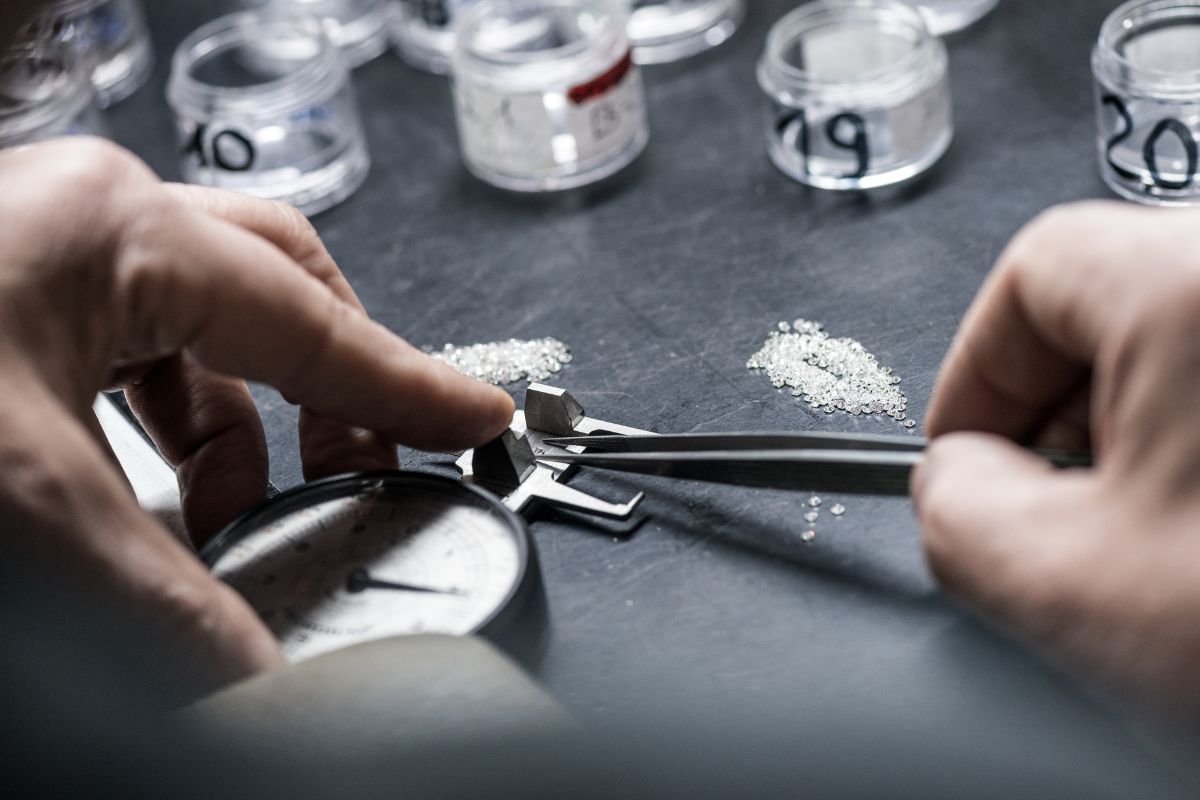
Composite diamonds offer you a brilliant blend of aesthetics and value. They are crafted with precision to create desirable pieces that both look exceptional and remain accessible to a wide range of budgets.
Design and Appearance
Composite diamonds achieve a distinctive appearance by meticulously positioning several smaller stones in a fixed arrangement, offering the illusion of a larger carat diamond. This structure allows a variety of unique designs, from a vintage look to modern geometric patterns.
Affordability and Value
The affordability of composite diamonds is a crucial advantage. You get a look that rivals that of a larger, single stone for a fraction of the cost. The smart design choices in these pieces maximize their value without compromising on the luxurious appeal that diamonds offer.
Variety of Designs
With composite diamonds, the variety of designs is vast; from traditional settings that evoke a classic charm to contemporary arrangements that suit a modern aesthetic. They often feature a diamond cluster, which elevates the design while maintaining an affordable price point, giving you access to a diverse range of styles to match your personal taste.
Purchasing Considerations
When you're in the market for a composite diamond, your focus should be on determining the worth of what you're paying for, ensuring the authenticity of the diamond, and selecting a trustworthy jeweler.
Evaluating Quality and Price
To ensure that you're getting good value for your money, it’s critical to weigh both the quality and the price of the composite diamond. Quality can be assessed using the 4Cs—cut, color, clarity, and carat—which are vital in determining a diamond's worth. A composite diamond may cost less than mined diamonds, which can make it an attractive choice if you have a budget to consider. However, remember to compare the pros and cons, as composite diamonds may carry differences in durability and appearance.
Certification and Trust
Credibility is paramount when it comes to diamonds. Always look for certification from recognized institutions such as the Gemological Institute of America (GIA) or the European Gemological Laboratory (EGL). Certification assures you of the diamond's quality, backing the details of the 4Cs provided by the seller. It boosts your confidence in both the product and the seller, ensuring that your investment is protected.
Choosing the Right Jeweler
Your experience with a reputable jeweler can make all the difference. Seek out jewelers who have established credibility and positive reviews. They should offer transparent buying tips and be willing to answer all your questions, enabling you to make an informed decision. The right jeweler will respect your budget while helping you navigate the choices to find the best quality available to you.
Jewelry With Composite Diamonds

Composite diamonds are crafted by combining smaller diamond pieces to create a larger gemstone. In jewelry, they offer a cost-effective alternative while still providing the dazzle and appeal of traditional diamonds, particularly for significant pieces like engagement and wedding rings.
Engagement and Wedding Rings
Your engagement ring should symbolize your unique bond, and choosing a composite diamond ring can allow you to maximize carat weight without straining your budget. A composite diamond engagement ring typically features several smaller diamonds that are expertly arranged and mounted together to give the appearance of a single, larger diamond. This can create a stunning piece that captures light beautifully at a more accessible price point compared to a similar-sized solitaire diamond ring.
- Carat Weight & Cost: Composite diamond rings often appear larger for the same carat weight, giving you more visual impact for your money.
Other Jewelry Pieces
In addition to rings, composite diamonds are a popular choice for other jewelry pieces such as earrings and necklaces. When selecting earrings or a necklace featuring composite diamonds, you're opting for eye-catching pieces that convey luxury and elegance. These jewelry items can contain multiple small diamonds set close together to create a distinct and bold design that stands out, especially in statement pieces.
-
Earrings: Sparkling composite diamond earrings can provide the same illustrious effect as larger, single stone diamond earrings, making them suitable for both everyday wear and special occasions.
-
Necklaces: A necklace adorned with composite diamonds can elevate your look, potentially showcasing intricate designs that would be prohibitively expensive with larger, single diamonds.
Caring for Composite Diamond Jewelry

Proper care and maintenance of your composite diamond jewelry can prevent damage and reduce potential repair costs over time. Here’s how you can keep your treasured pieces in pristine condition.
Cleaning and Maintenance
It's essential to keep your composite diamond jewelry clean to maintain its sparkle and prevent any buildup of lotions, powders, or other substances that can dull its appearance. To clean your jewelry, use a solution of warm water and a few drops of dishwashing soap. Gently brush the diamond with a soft toothbrush, rinse thoroughly, and dry with a soft cloth. Store your jewelry in a jewelry box with separate compartments or padded slots that can help prevent scratches and reduce the likelihood of a missing stone.
- Step 1: Mix warm water with dishwashing soap.
- Step 2: Gently scrub with a soft toothbrush.
- Step 3: Rinse thoroughly with warm water.
- Step 4: Dry with a soft cloth.
- Step 5: Store safely in a jewelry box.
Professional Repairs and Costs
Should your composite diamond jewelry require a repair, such as a missing stone or a loose setting, consult a professional jeweler. Handling repairs promptly can often mitigate future repair costs. Depending on the complexity of the repair, repair costs can vary. Simple prong tightening may be relatively inexpensive, whereas setting a new stone might incur higher repair costs. Always inquire about repair costs upfront and consider seeking multiple quotes to ensure that you are receiving a fair price.
-
Repair Type: Prong tightening.
-
Repair Cost: Typically lower.
-
Repair Type: Replacing a missing stone.
-
Repair Cost: Can be significantly higher based on the stone’s value.
Durability and Longevity

When you select a composite diamond creation, understanding its durability and longevity is vital. These properties are influenced by various factors such as the setting technique and the use of prongs or other supporting structures.
Setting: The way your composite diamond is set into the jewelry piece directly impacts its durability. A secure setting ensures the stones remain firmly in place over time.
-
Prongs: Prongs, which are the little metal claws that hold the diamond in place, should be checked regularly for wear and tear. It's advisable to have your jewelry inspected by a professional every 6 to 12 months to prevent the loosening of these components.
-
Setting Technique: Techniques like the invisible setting, where diamonds are placed next to each other without visible prongs, create a seamless surface. This technique requires precision as incorrectly set stones may affect the piece's durability.
Composite Diamond Pieces: In composite designs, smaller diamonds are often pieced together to create a larger diamond appearance. Here, the method of joining these stones together is critical for the overall longevity of the design.
-
Invisible Setting: In this setting, stones have grooves that are notched at the bottom, allowing them to slide into a metal framework hidden beneath the surface. This creates a sleek appearance but requires careful maintenance.
-
Notched Diamonds: Notched diamonds in a composite setting should be meticulously aligned to maintain the integrity and durability of the piece.
To ensure lasting enjoyment of your composite diamond jewelry, it's imperative you adhere to appropriate care guidelines, given the intricate nature of these settings. Your attention to these details will help maintain the splendor and strength of your jewelry for years to come.
Styling and Fashion

When considering composite diamonds for your wardrobe, it's important to recognize their place in styling and fashion. Unlike traditional diamonds, composite diamonds offer a blend of small diamonds fused together to create a larger appearance. This allows for more versatile and creative jewelry designs that can be tailored to both casual wear and more formal occasions.
-
Everyday Wear: Due to their lower price point, composite diamonds make luxurious styles accessible for your daily outfits. You can enjoy the sparkle of diamonds in a more relaxed setting without the worry associated with wearing a high-value item.
-
Artistic Expression: Jewelry featuring composite diamonds provides an avenue for individualistic styling. It can echo your personal aesthetics and serve as an artistic expression of your identity.
-
Fashionable Flexibility:
- Casual Wear:
- Pendants
- Bracelets
- Earrings
- Occasion Wear:
- Cocktail rings
- Statement necklaces
Attending to the quality and craftsmanship of the composite diamonds is essential. You want pieces that are well-made and can stand the test of time, allowing you to integrate them into various aspects of your wardrobe.
Remember, fashion is not only about following trends but also about making a personal statement. With composite diamonds, you're able to enhance your style without compromising on appearance or breaking the bank. Whether you're running errands or attending a gallery opening, composite diamonds maintain a balance between elegance and practicality.
Potential for Future Value
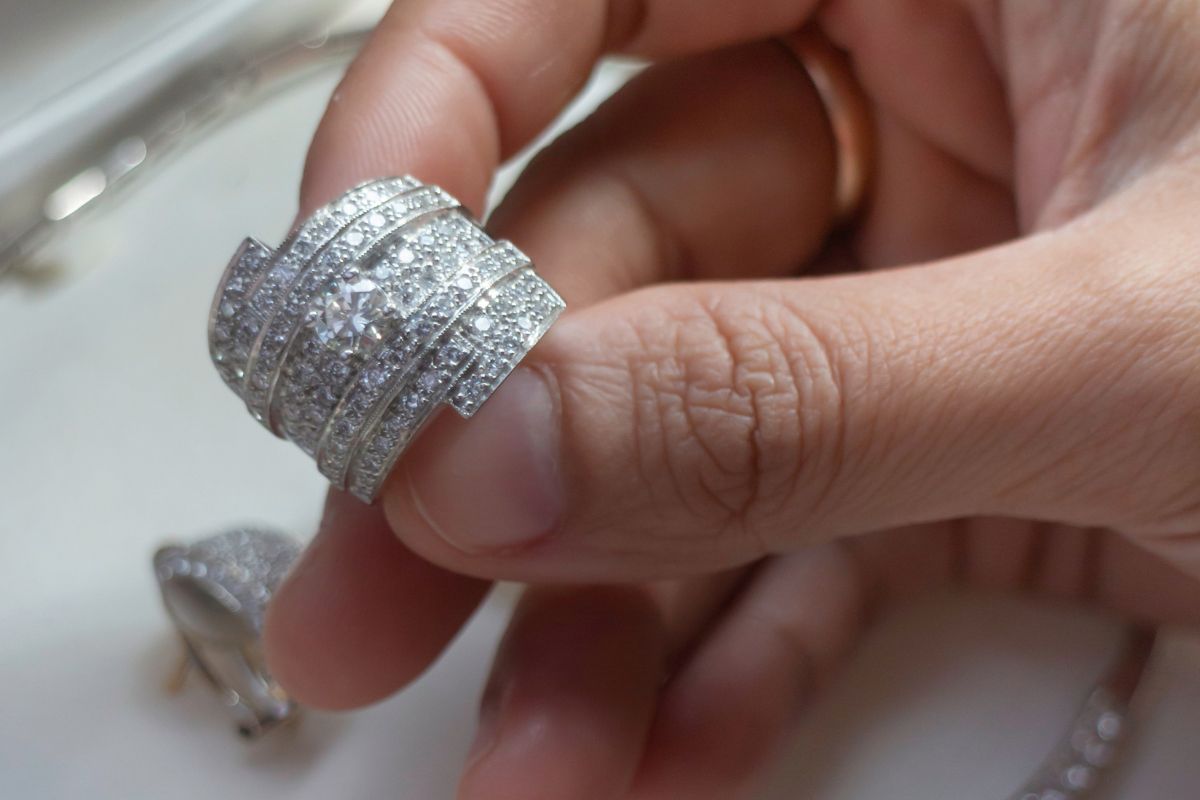
When you consider the application of composite diamonds, their potential for future value extends well beyond the current uses in industry. As high-performance materials, composite diamonds possess exceptional hardness and thermal conductivity, which makes them indispensable in fields requiring these properties.
Industrial Uses
- Cutting and Drilling: Your traditional industrial equipment may experience improved longevity and efficiency, as composite diamonds provide superior wear resistance.
Advancements in Technology
-
Electronics: The thermal properties of composite diamond could be harnessed to dissipate heat in electronic devices, potentially leading to advancements in technology that demand materials capable of operating at higher power levels or in extreme conditions.
-
Optical Applications: The clarity and hardness of composite diamonds might advance optical technologies, although the challenge of maintaining their innate fire and brilliance remains a concern. Future developments could yield methods to enhance these aesthetic qualities, elevating their use in various optical components.
Biomedical Applications
- Biocompatibility: Composite diamonds may play a significant role in biomedical implants due to their compatibility with human tissue. These composites could be engineered to simultaneously offer durability and biocompatibility, making them valuable for a range of medical devices.
In terms of diminishing issues such as fire and brilliance in composite diamonds, ongoing research and technological innovation are likely to address these challenges. The future value of composite diamonds is heavily dependent on overcoming such limitations and expanding their utility in diverse industries, including luxury goods where aesthetic qualities are paramount. Keep an eye on this space as composite diamonds are poised to redefine their worth across various sectors.
Technical Aspects and Innovations

When exploring composite diamonds, you’re looking at a fusion of technology and gemmology. Composite diamonds are engineered to elevate the aesthetics of multiple diamonds by configuring them in a unique arrangement. This allows you to enjoy a larger-looking piece of jewelry at a more cost-effective price point compared to a solitaire diamond of similar visual impact.
- Clarity and Sparkle: Composite diamonds are meticulously assembled to maximize clarity and sparkle, creating an illusion of a singular, larger stone.
- Color: You'll often find these pieces range from colorless to various shades, effectively using color grading to match and enhance overall appearance.
- Carats: The carat total weight (ctw) represents the sum of all stones in the piece, allowing for impressive carat weights at a fraction of the cost.
Cutting Techniques: Innovations in cutting have led to the capability of shaping these diamonds into multiple cuts, such as the milgrain-edge detail or incorporating a doublet or triplet design to imitate larger stones.
- Industrial Applications: Beyond jewelry, composite diamonds hold many types of gems and serve a role in industrial applications, especially where durability and precision are crucial.
Pricing: The pricing of composite diamonds reflects not just the total carat weight, but also considers the innovative arrangement and the intricate work required to simulate the appearance of a singular, larger diamond. This technical creativity is also employed in creating simulated diamonds, which are different from composites but also serve to imitate the aesthetics of natural stones mined from traditional sources such as kimberlite pipes or glacial tills.
Frequently Asked Questions
In this section, we'll address some critical inquiries about composite diamonds, focusing on their value, qualities, authenticity, pricing, quality, and practical applications.
How is the value of a composite diamond determined in comparison to a natural diamond?
The value of a composite diamond is typically less than that of a natural diamond. The price is influenced by factors such as brilliance, craftsmanship, and the types of materials used in the composite, but does not match the rarity or inherent properties of a natural diamond.
What are the distinguishing characteristics between composite and solitaire diamonds?
Composite diamonds consist of smaller diamonds or diamond pieces joined together, while solitaire diamonds are single, standalone stones. Composites aim to mimic the appearance of larger diamonds at a lower cost, whereas solitaires are valued for their individual size and purity.
In what ways do composite diamonds differ from real diamonds in terms of authenticity?
Composite diamonds are authentic in that they contain real diamond material, but they are engineered rather than mined as a single stone. Authenticity in this context refers to the stone's origin and creation, where natural diamonds are formed over millennia beneath the Earth's surface.
What is the price range for composite diamond engagement rings?
The price for composite diamond engagement rings can vary widely, starting from a few hundred dollars to several thousand, based on the total carat weight, design complexity, and setting materials. They are generally more affordable than rings with a solitaire diamond of similar visual size.
Can the quality of composite diamonds be considered high and how does it vary?
The quality of composite diamonds can be high in terms of craftsmanship and the clarity of the individual diamond pieces used. However, it varies depending on how well the composite has been constructed and the quality grade of the diamonds involved.
What are the implications of choosing a composite diamond for dental applications?
Choosing a composite diamond for dental applications, such as dental burs, typically offers a balance between performance and cost-effectiveness. The composite material provides sufficient hardness and durability for dental procedures while being more affordable than tools made with solitaire diamonds.
Checkout some of our top collections:
